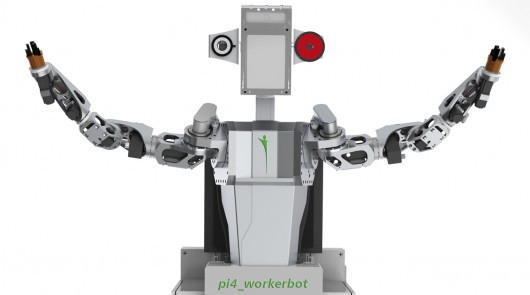
Industrial robots are generally programmed to carry out one task and one task only.
While they are extremely quick and efficient at performing their assigned task, adapting them to other tasks can be a time consuming and expensive endeavor. In an effort to introduce robots with greater flexibility into industrial inspection and assembly systems, the EU-funded PISA research project has developed the pi4-workerbot. The multi-tasking robot is similar in size to a human being and features two arms, three cameras, fingertip sensitivity and can even produce a variety of facial expressions.
The robot’s size allows it to be employed at pretty much any modern standing or sitting workstation found in an industrial manufacturing environment. Whereas most conventional industrial robotic arms have six degrees of freedom with one swivel point at the shoulder, each of the workerbot’s two arms have seven degrees of freedom with an additional rotation joint that corresponds to the human wrist. This gives the robot the ability to transfer a workpiece from one hand to the other, allowing it to view a complex component from all angles.
The pi4-workerbot’s three cameras include a forehead-mounted 3D camera to capture its general surroundings and two other cameras that are used for inspection purposes. This allows it to inspect one aspect of an object with its left eye and another aspect with its right eye at the same time. Measuring an object with one eye while identifying whether a coating has been perfectly applied with the other, for example.








